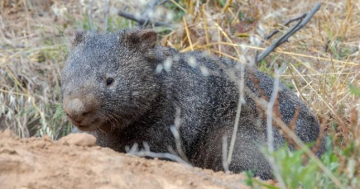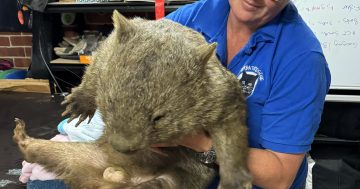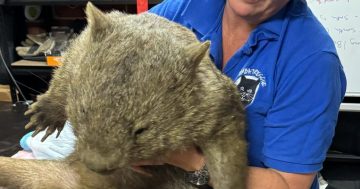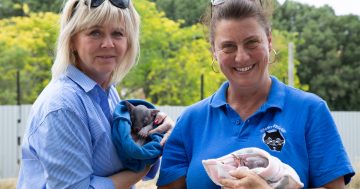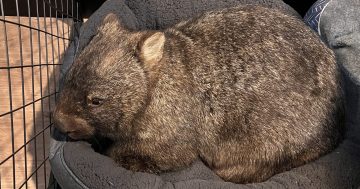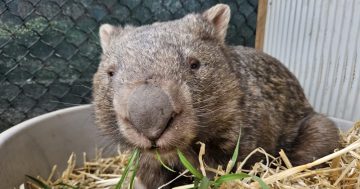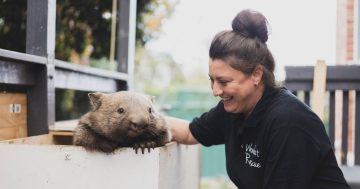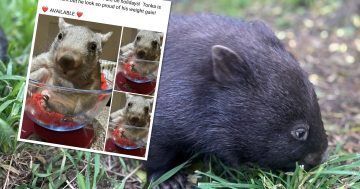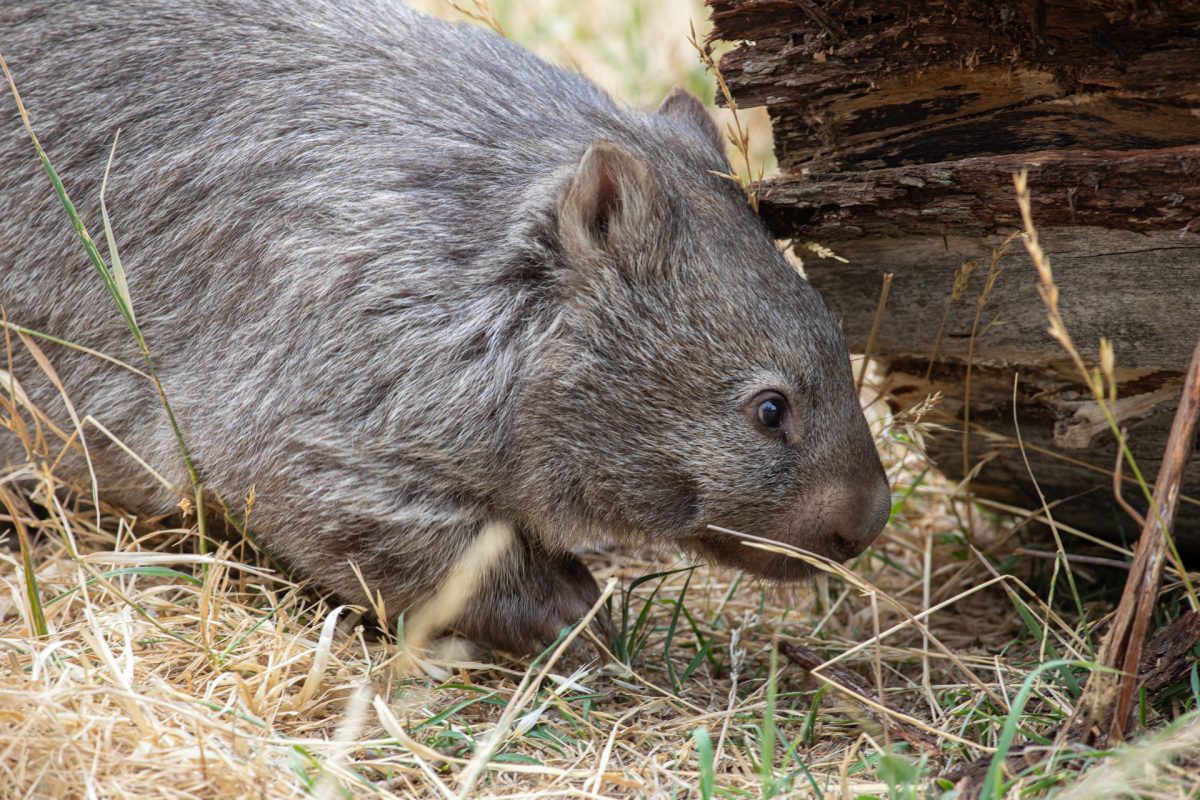
Wombat Rescue has worked on the new guidelines for more than three years. Photo: Michelle Kroll.
The ACT Government has updated its environmental planning guidelines to protect wombats from being effectively buried alive in their burrows during new developments.
The new Guidelines for the Management of Burrowing Animals During Development come after a “long three-year process” led by Wombat Rescue founder Yolandi Vermaak.
It started when she noticed the new suburbs of Denman Prospect and Whitlam in the Molonglo Valley.
“My team and I had been mapping burrows in this area for a while, and when these suburbs started happening, I could see the damage being done and these wombat burrows being cleared, and I thought, ‘Where are these wombats going?” she says.
Ms Vermaak searched through the developments’ Environmental Impact Statements (EISs), only to find many of them were over 10 years old – far beyond the age of the burrows.
“And even if there is a more recent EIS, all the ecologists look for is threatened flora and fauna – there’s nothing about wombats,” she says.
“This could only mean that when development and clearing started, these animals – who sleep underground during the day – were crushed and killed.”
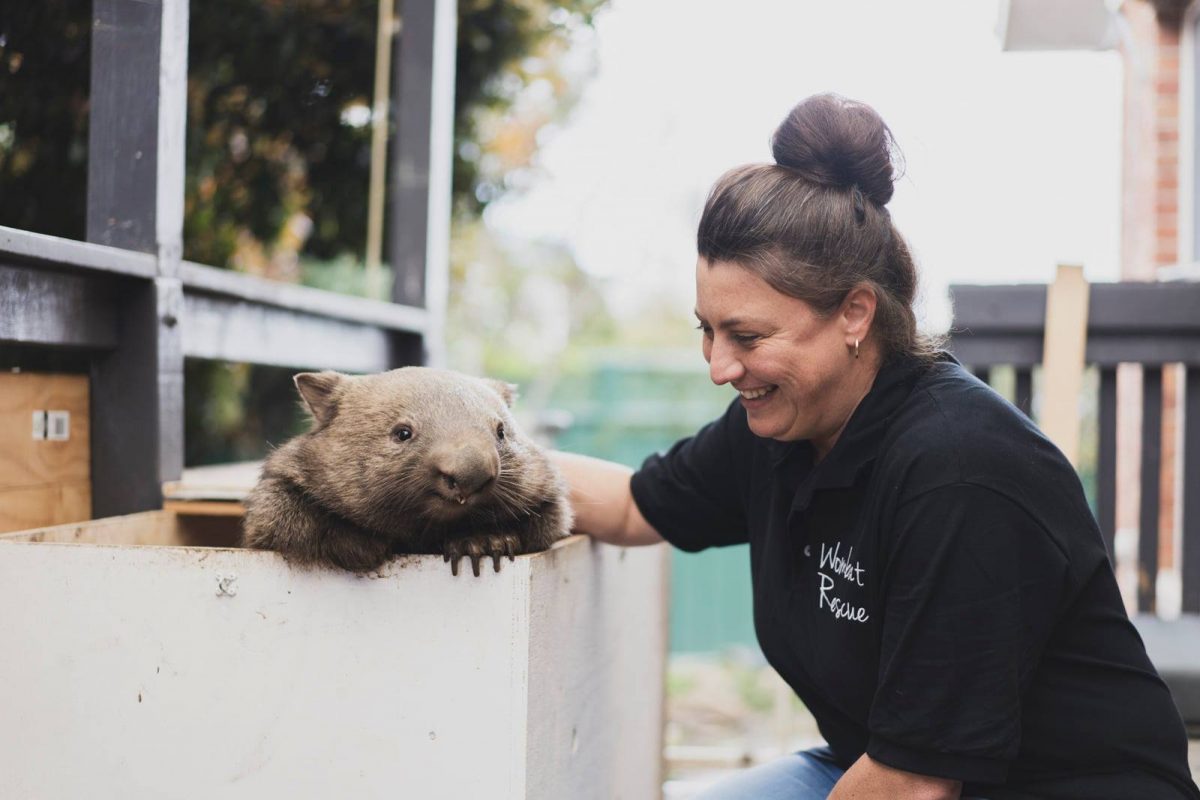
Yolandi Vermaak is the founder of Wombat Rescue. Photo: Wombat Rescue.
She decided to take matters into her own hands. She drafted a framework document “outlining the issue and possible solutions and outcomes” alongside the Office of the Conservator of Flora and Fauna, as well as other government officials and ecologists.
The Nature Conservation Act currently forbids developers from interfering with what it calls “nests”, including wombat burrows, let alone catching a wombat or killing it, with severe penalties attached.
But Ms Vermaak says there was no requirement for the EIS to include wombats.
“What’s going to happen now is if a development application is submitted for, say, the Molonglo River corridor where it’s known there are wombats, the conservator will ask for a report, and ecologists will then have to specifically go in and map out where all the wombat burrows are.”
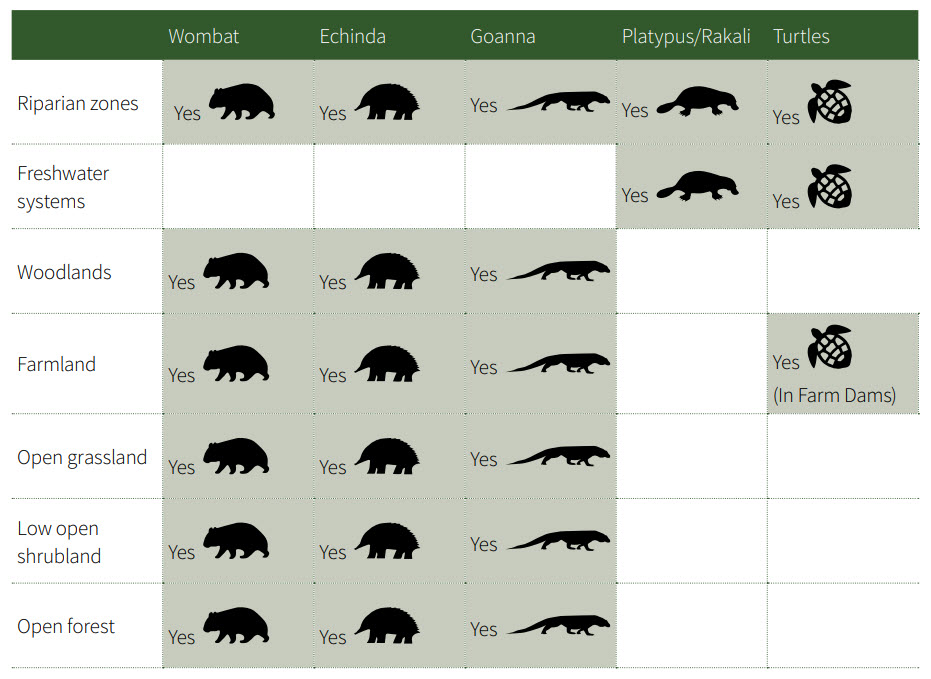
Developers must now assess what sort of burrowing animal may be on their site by what type of site it is. Photo: Screenshot.
A developer must now assess what burrowing species may live on their site as part of the approval process, and if a burrow is found, then determine if it’s in use by searching for scats and installing stakes at its entrance for at least three consecutive days (if the stakes are disturbed, it’s clearly still in use).
Motion-sensor cameras must then monitor an active burrow for at least five consecutive days.
“No occupied burrows may be blocked or destroyed,” the guidelines read, adding that “the occupying animal should first be appropriately managed”.
At this point, a group like Wombat Rescue would be called to relocate the animal.
“If they have an occupant, we have to come along and put gates in, and the wombat needs to exit,” Ms Vermaak explains.
“Once we’ve confirmed they’ve exited, then you can destroy the burrow. But if the wombat is mangy or if it’s got a baby, you are not allowed to do anything. You have to leave them.”
If the burrow is determined to be vacant, the development can go ahead as planned, but only after a licence has been issued to destroy it.
There are a few issues to be ironed out as the guidelines are put into practice, mainly around making sure the conservator is up to date on where the ACT’s wombats are.
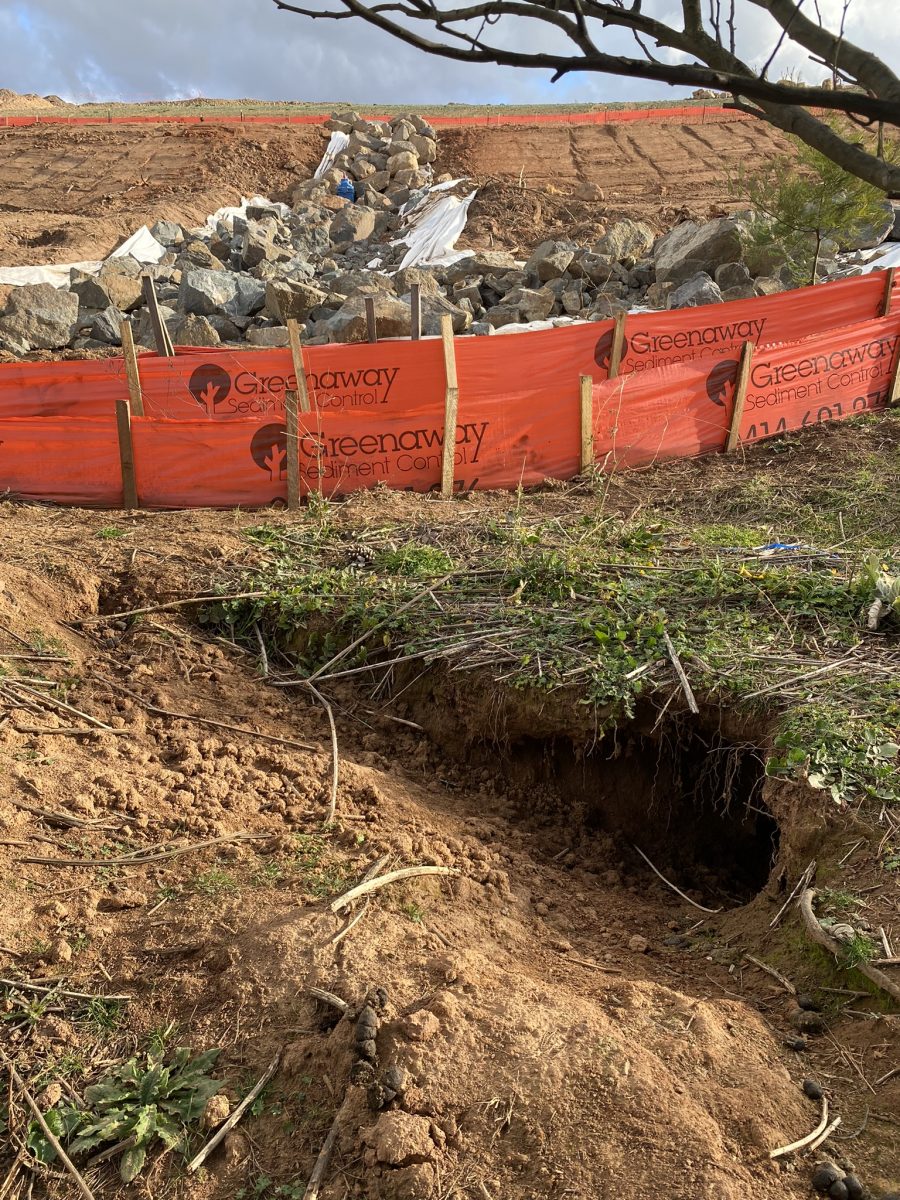
An example of a wombat burrow near a construction site. Photo: Wombat Rescue.
“Whenever there’s a development application in wombat area, I write a report on it and voice my concern as a member of the public, but I might miss some too,” she says.
“For example, there’s been a DA for a school in Harrison, which was a paddock that belonged to a farmer, but I know there’s a wombat in there – I’ve seen him – and that’s not going to trigger this guideline.”
But Ms Vermaak says she is “unbelievably proud” of what she describes as her organisation’s “biggest achievement” and a “first for Australia”.
“The philosophy is birds can fly away if there’s a nest, and kangaroos will hop away, but no one really talks about wombats,” she says.
“I would love to see our neighbours at Queanbeyan-Palerang Regional Council, as well as other local councils in wombat areas, implement something similar to this to protect wombats during development.”












